Steam Deck vs Nintendo Switch
It's not as simple as which has the better specs, they're fundamentally different machines.
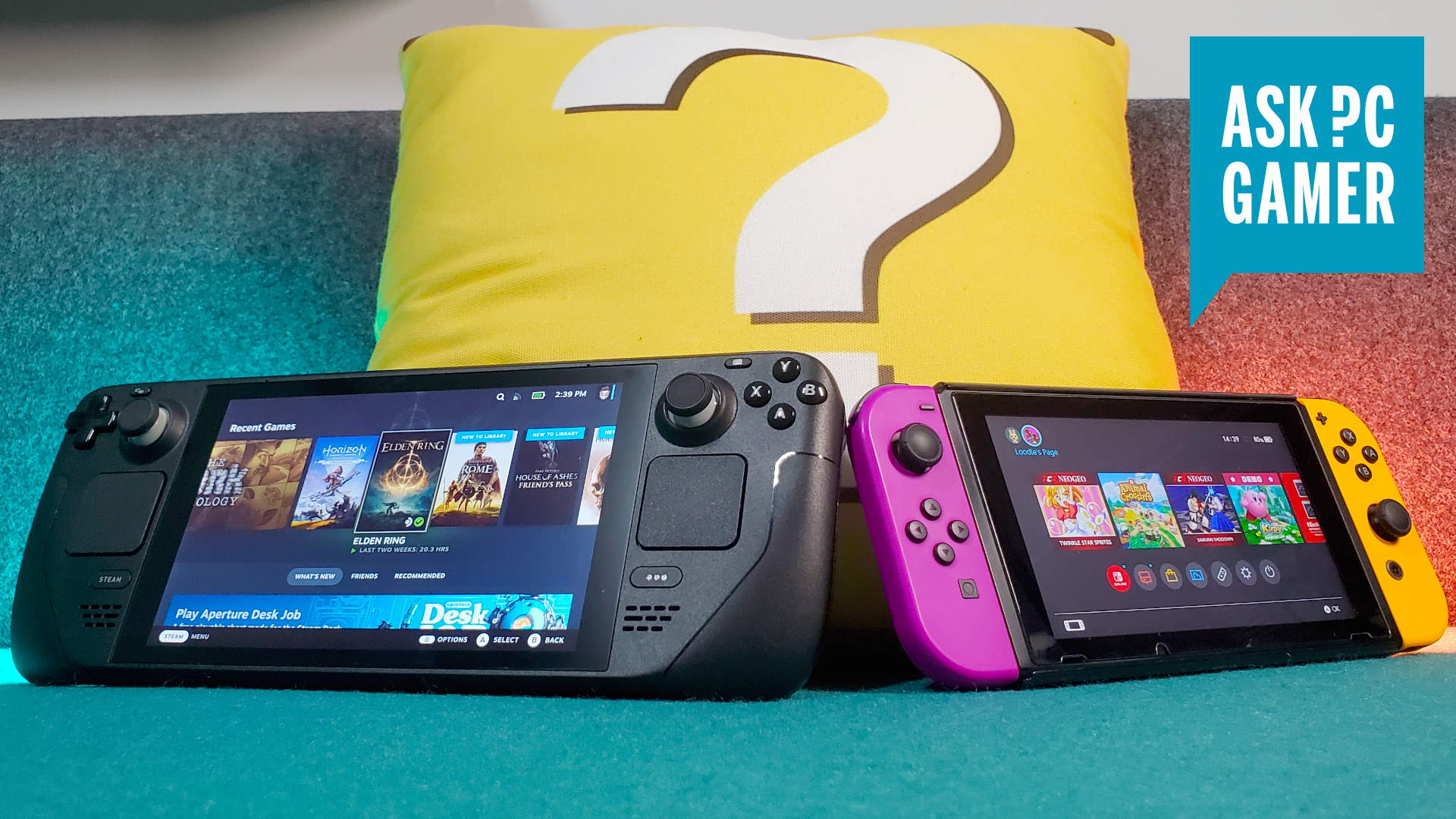
The automatic comparison you will likely make when first clapping eyes on Valve's Steam Deck is the Nintendo Switch. That's the most popular handheld gaming device right now of a physically of a similar design (and no, I don't count phones). Indeed, the Switch is the console Valve had at the forefront of its mind while designing the Steam Deck, whether from that physical standpoint or because of its pricing model.
But, if you're looking for some handheld gaming action, which of these two pocket rockets should you buy? And yes, I do have big pockets.
I'm looking at the positives and pitfalls of the two devices and weighing up which of them deserves your hard-earned money. And there are many things to consider, from the underlying hardware, to the design, the use-cases, and finally what they actually feel like to own.
There are many similarities between the Deck and the Switch, but also significant differences, which it can be argued make such comparisons somewhat unfair on one or the other device. But Valve clearly had the Switch in its target from the outset, as Gabe himself has told us: "The $399 price point was sort of written in stone. And we had to do a bunch of stuff, like make massive min commits [minimum order commitments], and other kinds of things in order to get to the volumes that would allow us to hit those sorts of price points."
That target for the most affordable Deck puts it damned close to Switch OLED pricing. And, from the look of the Steam Deck prototypes released in its press review kit, Valve had even been considering aping the removable controller design of the Switch for a fair amount of the development process, too.
Outside of that, though, the Steam Deck is its own thing. It's a full PC after all, and one of the best budget gaming PCs around, too. The Switch is as closed an ecosystem as the Deck's is unbelievably open.
Steam Deck vs Switch: Price
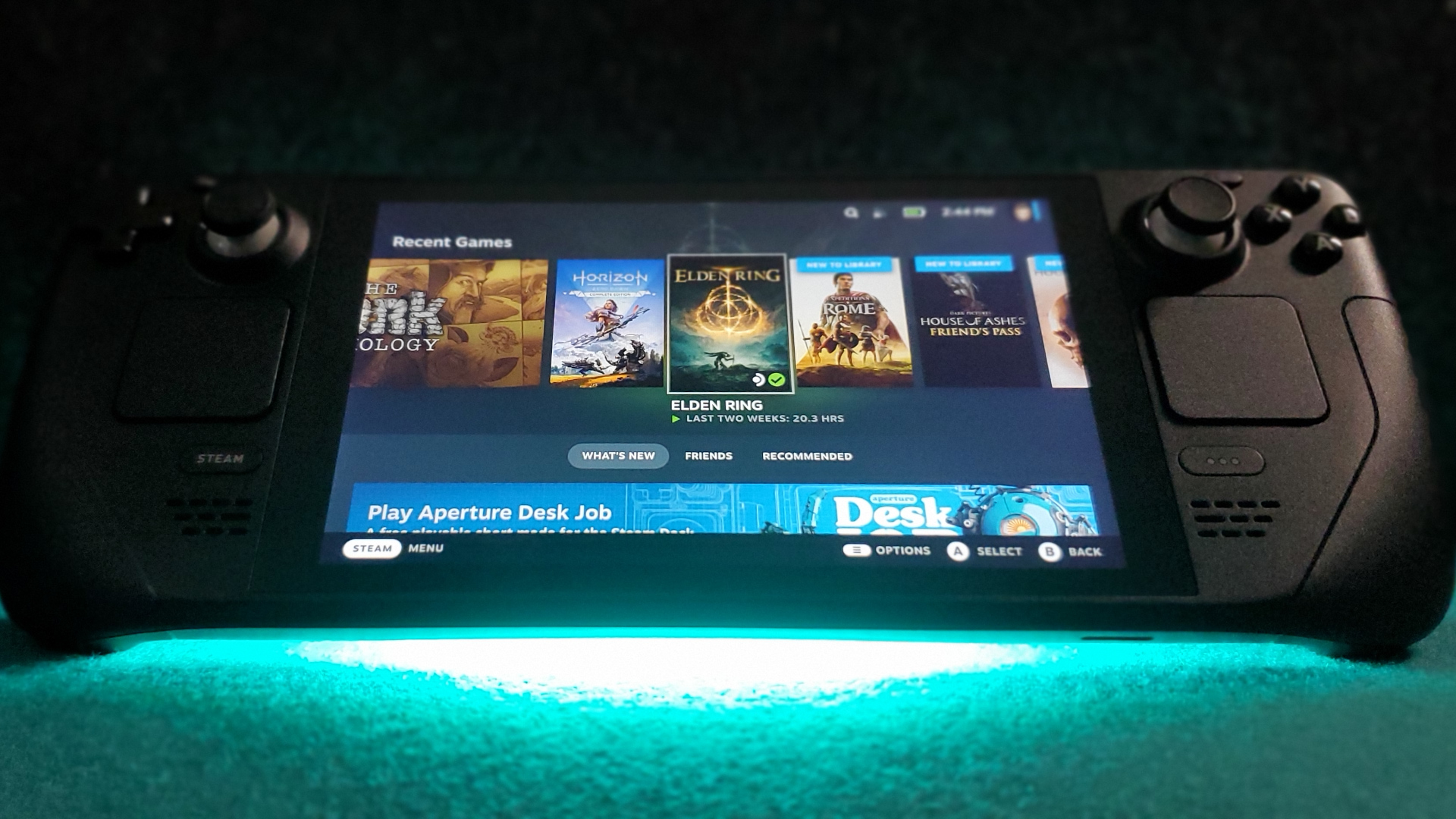
Steam Deck vs Switch: Price
The pricing of the Steam Deck is one of the most impressive things about it. This is a full handheld gaming PC that costs less than a third of the price of some of the other Switch-a-like PCs we've seen thus far. That said, at its $399 cheapest it's still more expensive than the priciest Switch, the latest OLED version at $350.
The biggest gaming news, reviews and hardware deals
Keep up to date with the most important stories and the best deals, as picked by the PC Gamer team.
But Valve has bent over backwards to make sure it was able to nail a price point for its entry level Deck that was at least close to the Switch, with Gabe himself stating that pricing was "painful."
The fact you can bag a Steam Deck for just $50 more than a Switch is mighty impressive, made more so by every tier of Valve machine having otherwise identical specs.
This is a new, highly sought after gaming machine that's launching in the midst of a technology supply crisis, where prices are ubiquitously sky-high, and yet Valve has stuck to its original, aggressive pricing strategy. And because pricing is so fundamental to the device, for the love of Gabe, please don't spend over the odds on an Ebay Steam Deck.
Steam Deck vs Switch: Tech Specs
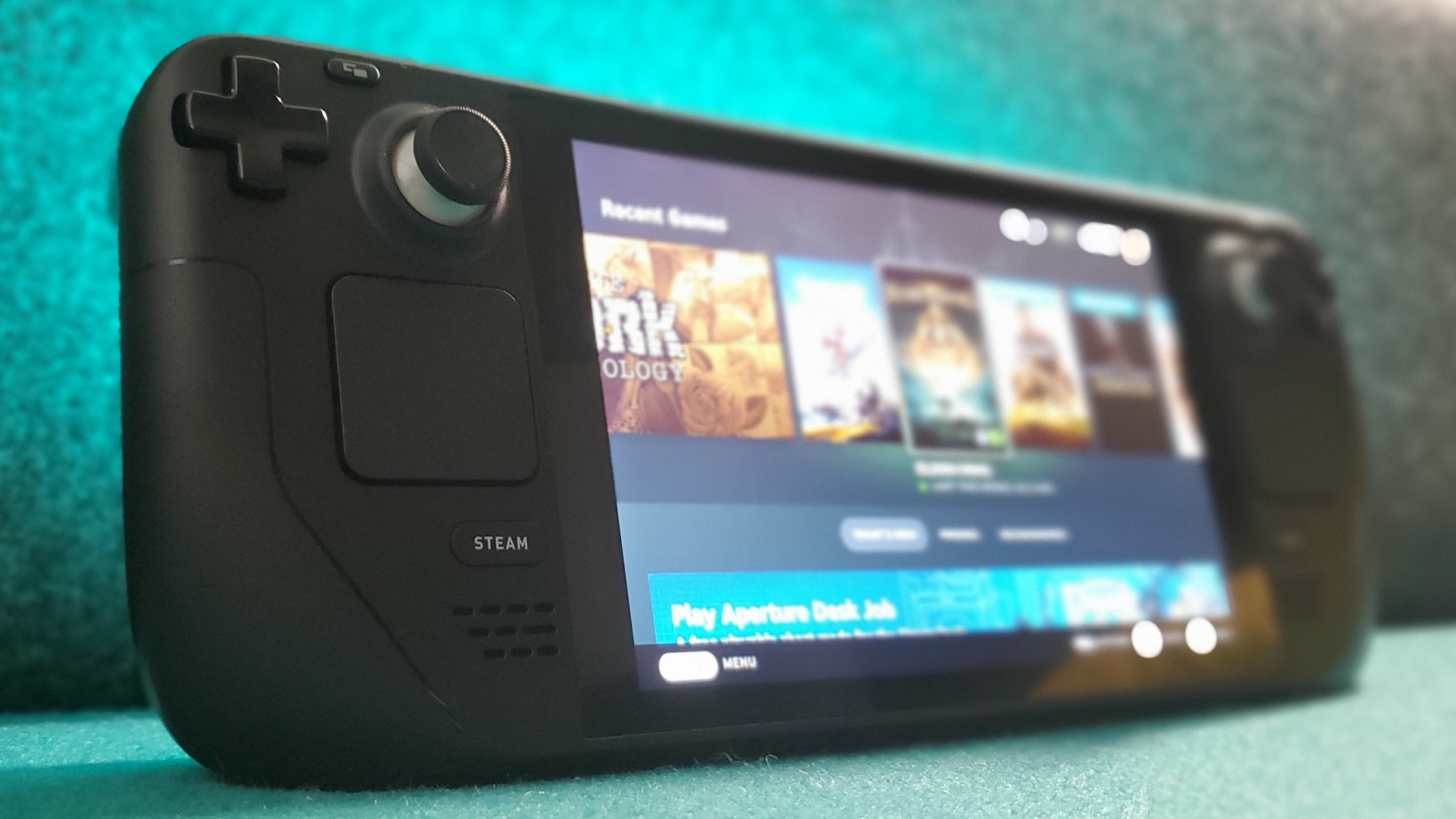
Steam Deck vs Switch: Tech Specs
Even the Switch OLED's specs are strictly last-gen. Actually, probably further back than that, while the custom AMD APU that Valve has plumbed into the heart of the Steam Deck is almost as up to date as you can get. Only the CPU cores themselves are anything but the very latest tech.
| Header Cell - Column 0 | Valve Steam Deck | Nintendo Switch |
|---|---|---|
| APU | Custom AMD Van Gogh (Aerith) | Custom Nvidia Tegra X1 |
| Process | 7nm | 16nm |
| CPU architecture | AMD Zen 2 | ARM Cortex-A57 |
| CPU clock speed | 2.4 – 3.5GHz | 1.02GHz |
| Cores | Threads | 4 | 8 | 4 | 4 |
| GPU architecture | AMD RDNA 2 | Nvidia Maxwell |
| GPU clock speed | 1 - 1.6GHz | 307 - 768MHz |
| Stream processors | 512 | 256 |
| RAM | 16GB quad channel LPDDR5 @ 5,500MT/s | 4GB LPDDR4 @ 1,600MT/s |
| Storage | 64GB eMMC | 256GB NVMe SSD | 512GB NVMe SSD | 32GB eMMC | 64GB eMMC |
| Display | 7-inch LCD touchscreen | 6.2-inch LCD | 7-inch OLED touchscreen |
| Native resolution | 1280 x 800 | 1280 x 720 |
| Refresh rate | 60Hz | 60Hz |
| Audio | Stereo speakers, 3.5mm jack, dual mics | Stereo speakers, 3.5mm jack |
| Connectivity | Wi-Fi, Bluetooth, 1x USB Type-C with DisplayPort 1.4 support | Wi-Fi, Bluetooth, 1x USB Type-C |
| Battery | 40Whr | 5,313mAh | 16Whr | 4,310mAh |
| Dimensions | 11.7 x 4.6 x 1.8-inch (298 x 117 x 49mm) | 9.5 x 4 x 0.55-inch (242 x 102 x 13.9mm) |
| Weight | 1.47lbs (669g) | 0.93lbs (420g) |
| Price | $399 (£349) | $529 (£459) | $649 (£569) | £569 ($649) | £310 ($350) |
The Steam Deck's hardware blows the Switch out of the water
Across the board the Steam Deck has the superior specs list, as you would expect from a device created for the demands of gamers in 2022. The fact it's also sporting an x86 processor, with the latest AMD GPU architecture, makes it a genuine handheld PC, and that is arguably the thing that really sets it apart from the Nintendo console.
In direct comparison, the Steam Deck's hardware blows the Switch out of the water. The Nintendo slab is, after all, mostly based on an Nvidia Tegra tablet from many, many years ago now.
There's also the storage situation, too. The cheapest Deck comes with the same 64GB limitation as the top Switch, but you could also bag the 256GB or 512GB versions, too. That and the fact that, for as little as $35, you could buy a 256GB micro SD card and vastly expand the storage capacity of the Deck.
The size of the screen is identical, and the resolutions are similar. The Deck has gone for a 16:10 1280 x 800 res, while the Switch is more traditionally 16:9 at 1280 x 720.
But raw power isn't everything and in a handheld device; battery life is arguably the most important thing so…
Steam Deck vs Switch: Battery life
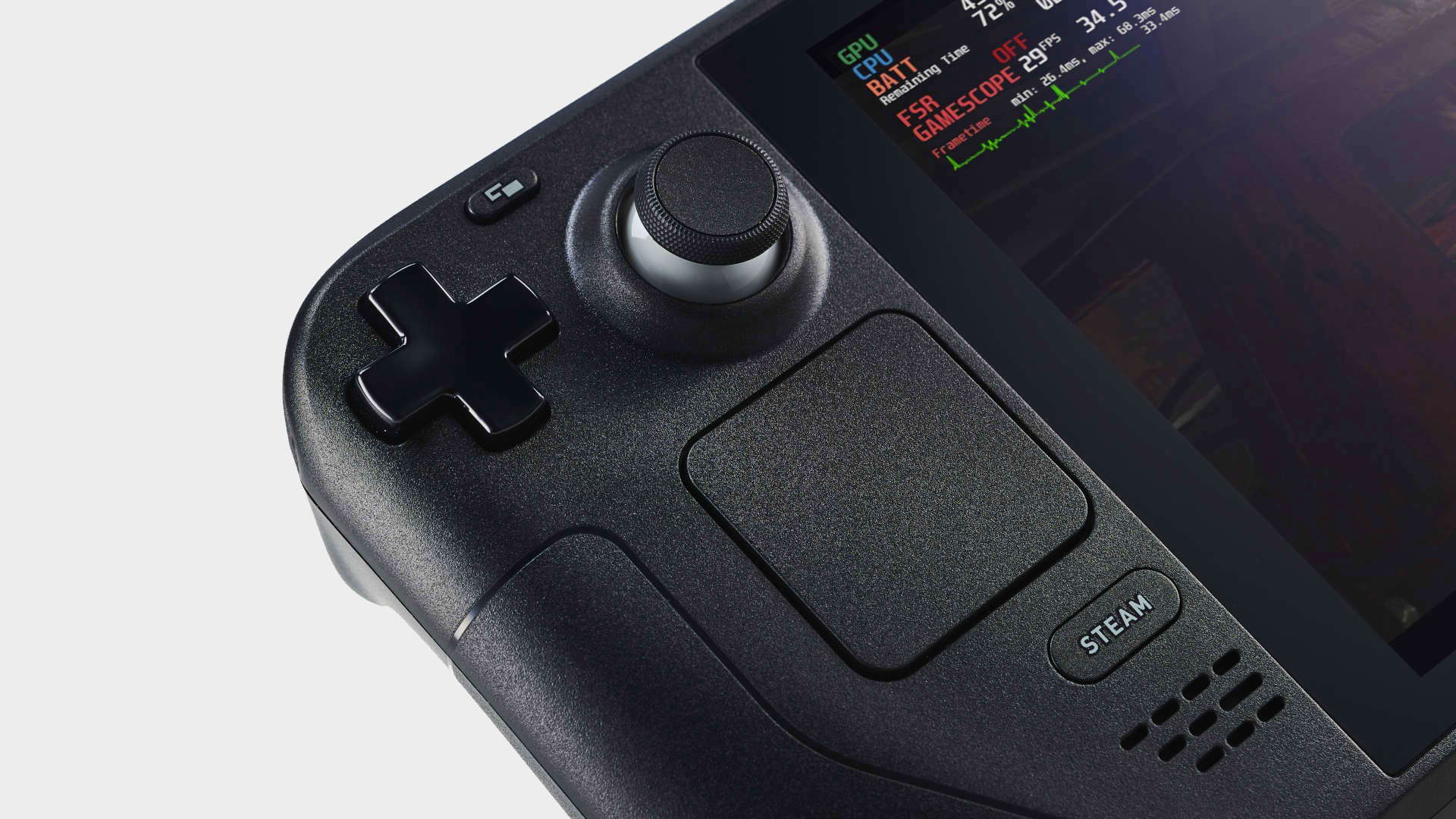
Steam Deck vs Switch: Battery Life
The battery is a key spec for a handheld, and the 40Wh vs. 16Wh headline spec might suggest the Deck will significantly outlast the Switch, but in reality the difference in battery life is smaller than it would seem. The lower-spec hardware in the Switch, and the fact that games are generally tailored specifically for it, means that it gets a listed battery life of between four and a half and nine hours, that's for the V2 and OLED versions, however, not the original or Lite Switches.
The Steam Deck, on the other hand, is running full PC games, with the promise of two to eight hours of gaming time. The hardware is thirsty, and therefore even with a bigger battery that doesn't mean the Deck will be gaming long after the Switch has gone to sleep.
But, if we take a game that's available on both platforms, such as The Witcher 3, we can get a better idea of the comparative battery life of the two systems. In my Steam Deck battery life testing, with The Witcher 3 running locked at 30 fps on medium settings, I was seeing almost four hours of gaming life from the Deck. With the Switch, however, you're looking more likely at the two and a half to three hour mark.
All that said, however, if you were to leave the Steam Deck to its own devices, and run at its limits with every game you throw at it, you'll have great performance, but battery life that can run dry in just 83 minutes.
Steam Deck vs Switch: Design
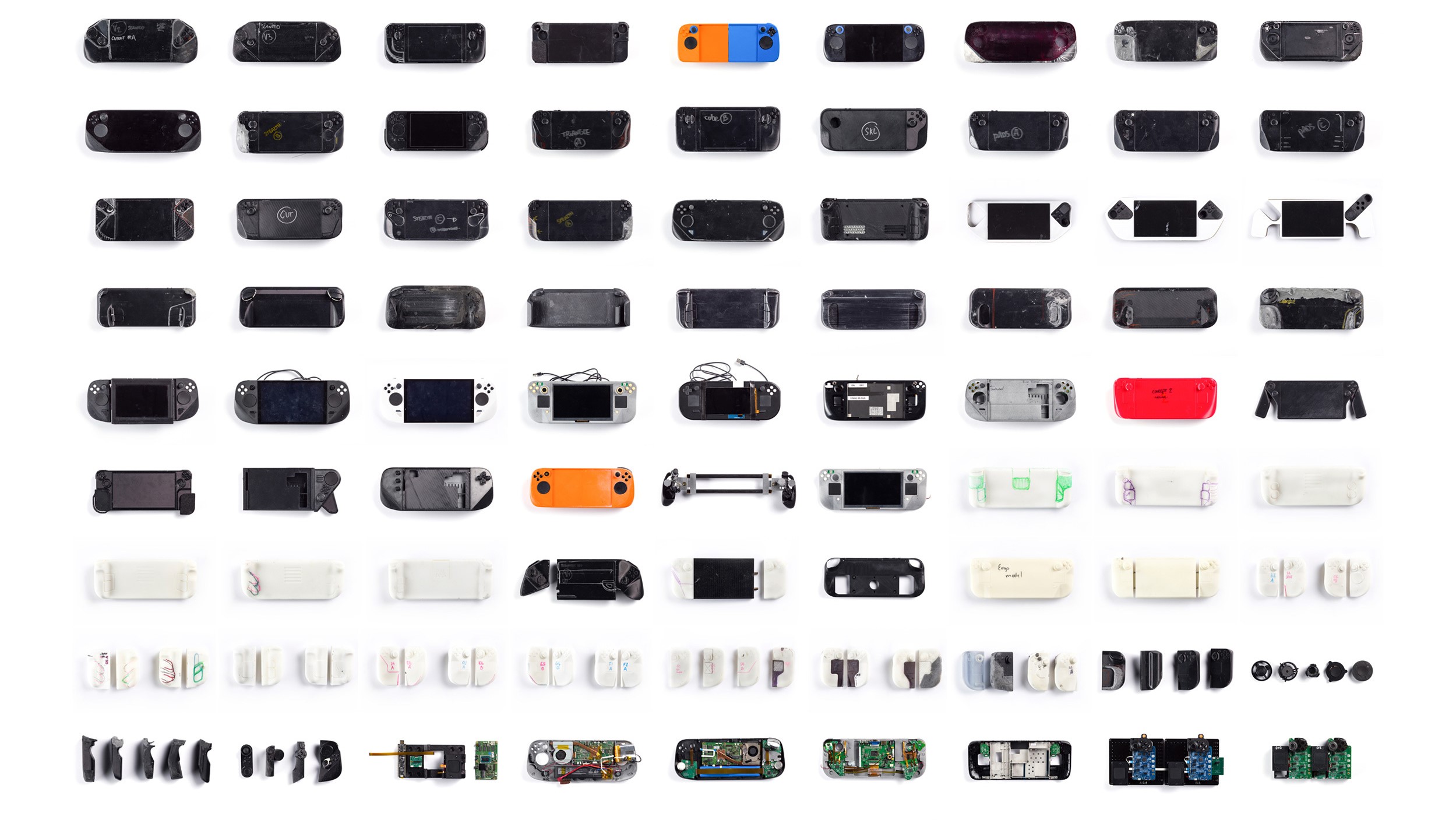
Steam Deck vs Switch: Design
I have to admit to not touching my Switch for nearly two years. The pandemic and necessary lack of travel has meant I'm tied to my home, and therefore my desktop PC. And if I want to sit on the sofa and play games I've got GeForce Now plumbed into my Shield so I can game on my big screen TV.
But pulling the Switch out of its carry case after its long sleep, I'm still just as enamoured by its overall design. It's such a slight device, especially in comparison with the chonky Steam Deck, and I love the fact it's practically all screen.
The innovative design, which allows you to detach the controllers to either use independently or by dual-wielding them, is something that Valve looks like it tried out with various iterations of Deck prototype. You can see from some of the weirder designs that Gabe's gang wanted to closely follow the Switch design.
And I'm not surprised, as it does make the handheld actually function as a portable gaming device for multiple people and not just solo-play. Whip off the Switch pads and set the device up on its kickstand and you can be having a blast in Mario Kart with a mate in no time.
The compromise, however, is in the overall solo ergonomics, something that I would assume Valve has seen as a priority. Realistically the Deck is not a multiplayer device, and so styling it to fit around the comfort of a single player is the smart move.
Nod off while holding the Deck aloft and you could easily break a nose, where the Switch might just net you a black eye
I don't think anyone would say the Switch's controls are particularly comfortable for a long session, while I've been impressed by both the balance and the handheld ergonomics of the Steam Deck.
You just have to press down a trigger or shift around the full-scale analog sticks to know that Valve has prioritised that side of things. The Deck's controls feel reassuringly robust, and when the inevitable stick drift happens, as it always, a crosshead screwdriver and a quick iFixit purchase of a stick module will get you back up and running in no time.
And hey, maybe that stick drift may end up all being in the mind of the Deck itself and can simply be patched away again.
Still, the consistent "I can play games in bed now" rhetoric doesn't really scan for either device. The Switch isn't that comfortable to use when lying down because of the contortions your hand has to do in order to hit buttons, triggers, and thumbsticks, where the Deck is so heavy gravity will inevitably force you to finish your game early however comfortable you find its curvy design.
And if you should nod off while holding the Deck aloft you could easily break a nose, where the Switch might just net you a black eye.
The Switch also gets style points for its various colour options, too. The Deck comes in black, and that's it. Though I have no doubt some silicon skins will appear in the not too distant future with the classic Switch blue and red design.
And probably more garish options, too.
Steam Deck vs Switch: Games
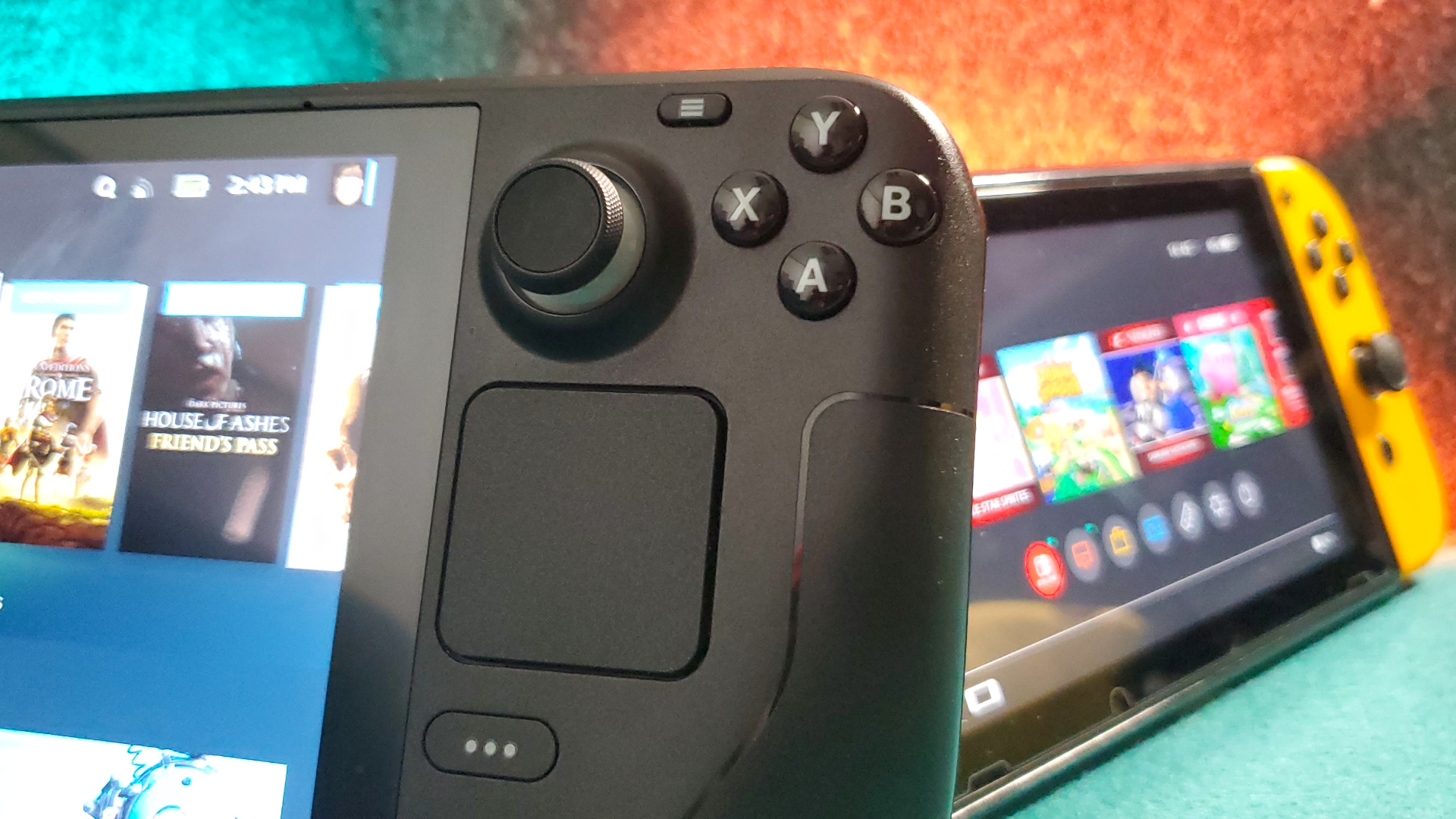
Steam Deck vs Switch: Games
There are 4,345 Nintendo Switch games listed on Wikipedia, though some are duplicates/regionalised versions, and some aren't actually games. That means the real number will be a little below that. The Steam Deck, however, has nominal access to over 50,000 games from Steam alone. You don't even need to factor in everything available on Epic, GoG, and any other gaming storefront you could mention, to realise the sheer weight of gaming history that is on the side of Valve's handheld machine.
The sticking point, however, remains around how many of those games will in fact work on the SteamOS 3.0 implementation of the Deck's OS, and how many of those will work well within the confines of the control system. In the future Windows will be functional on the Steam Deck, which will get around the thorny issue of Linux and Proton compatibility, so you should effectively be able to get any PC game at least booting on the Deck.
And, thanks to the power and popularity of emulators on the Steam Deck, you can even go outside the PC platform for your gaming fix. Want to slap a bunch of your old DS games onto an SD card? Go for it.
Still, it's the point about how well they work, which is where the Nintendo walled garden has its positives. Every game available on the Switch has been designed specifically to be played on that device. For core titles, such as Mario Odyssey and Breath of the Wild, the Switch itself is part of the way the games play, and for third-party games, such as cross platform biggies like Skyrim or The Witcher 3, they've been tailored to work within the limitations of the hardware.
You can plug in or download any game on the Switch and be confident about it working correctly first within minutes of a completed install. On the Deck, however, there are a few more hoops to jump through and a whole lot of emphasis placed on the user and about how exactly they want that game to run.
I've spent a looooong time getting God of War and Forza Horizon 5 balanced to play well, both in terms of actual performance and eventual battery life.
Steam Deck vs Switch: Versatility
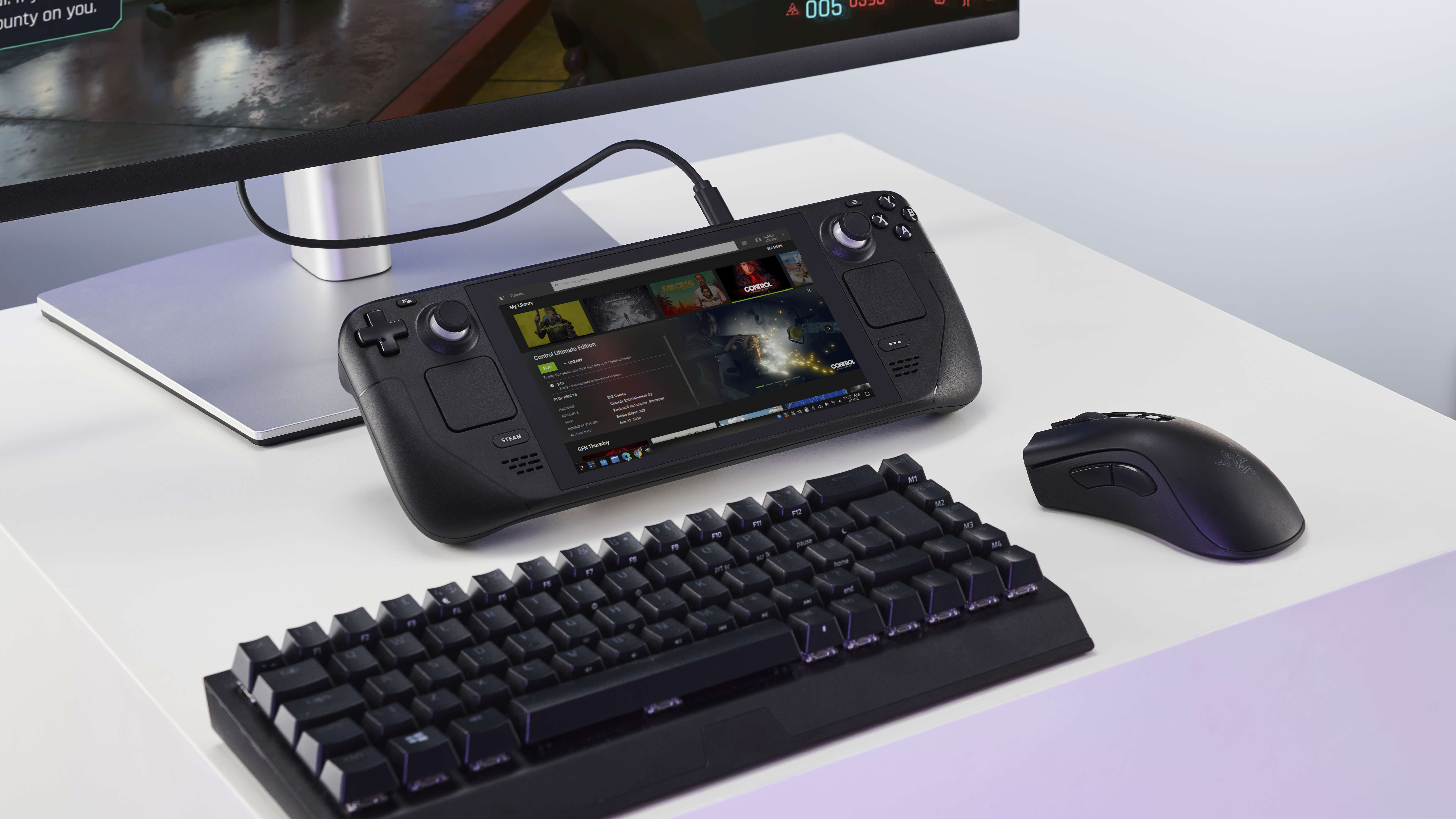
Steam Deck vs Switch: Versatility
As I mentioned before, the design of the Switch means it can be used in multiple ways. It can either just be a straight handheld gaming device, a mobile multiplayer games system—to get your Mario Kart or Splatoon fix in wherever you are—or a full connected-to-TV console with 1080p upscaling.
That versatility is one of the main strengths of the Switch, and why even with its outdated hardware it still remains one of the best games consoles you can buy.
But versatility is the watchword of the Steam Deck, too. Yes, you can use it as a handheld, dock it to your TV or monitor. But while you may not be able to strip off its controllers and engage in some one-on-one racing, and there's no kickstand, we're not even close to scratching the surface of all the things you can do with Valve's device.
The fact it's a PC at heart means anything you can do with your existing gaming rig or laptop, you can do with the Steam Deck.
You could even theoretically mine crypto on it. You savage.
The OS is largely your biggest barrier, but only in terms of consistent compatibility with the Windows ecosystem and your own knowledge of a Linux Terminal. Still, I'm a Linux dummy and was still able to switch the Deck into its alternative desktop mode, and run it like a standard dual-screen desktop PC via a powered dock. I spent a good few days in the office doing all my day-to-day PC Gamer grunt work without any real fuss.
Steam Deck vs Switch: Availability
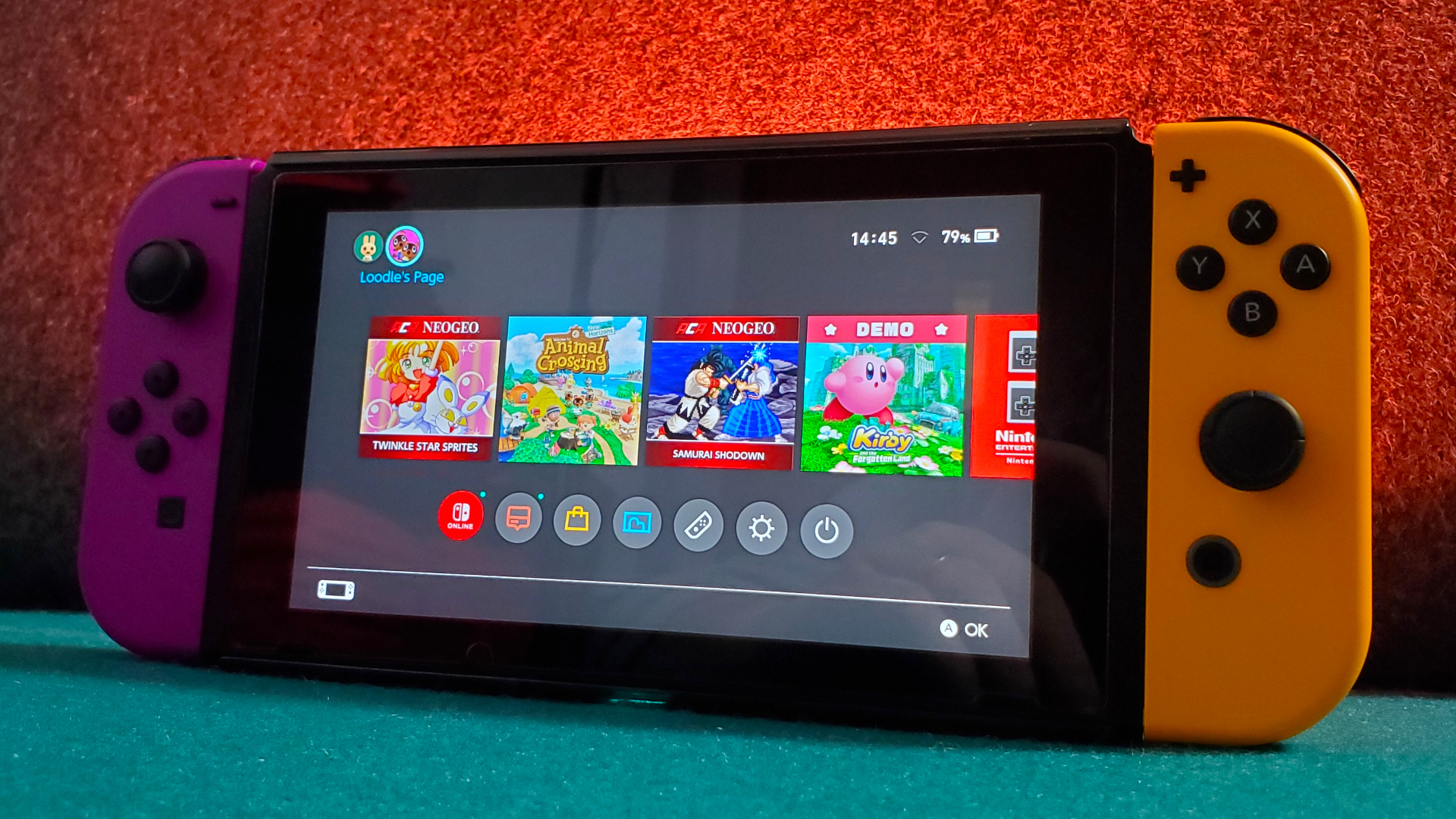
Steam Deck vs Switch: Availability
If I wanted to buy a Switch today, I could take a trip to some anachronistic pile of bricks and mortar and purchase one almost immediately. Or I could just wait a few days for someone to hand deliver it to my door. Of course, Gabe is kinda doing that with the Steam Deck, but only for a few people who managed to pre-order one back in 2021.
You want a Steam Deck today and you can throw your $5 into the hat and hope your reservation ticket to buy comes up sometime before the end of the year. Valve has said that production is ramping up quickly, to the point where we'll be moving from tens of thousands of units created this month to hundreds of thousands next month. Then you'll get a more granular look at just what the 'After Q2' wait times actually translate into; you can already see if your reservation has shifted to a more concrete Q3 timeframe.
The point is, however, that the Steam Deck will remain beyond an expensive impulse purchase for a good while yet. While even the latest Switch OLED can be yours today.
Steam Deck vs Switch: Verdict
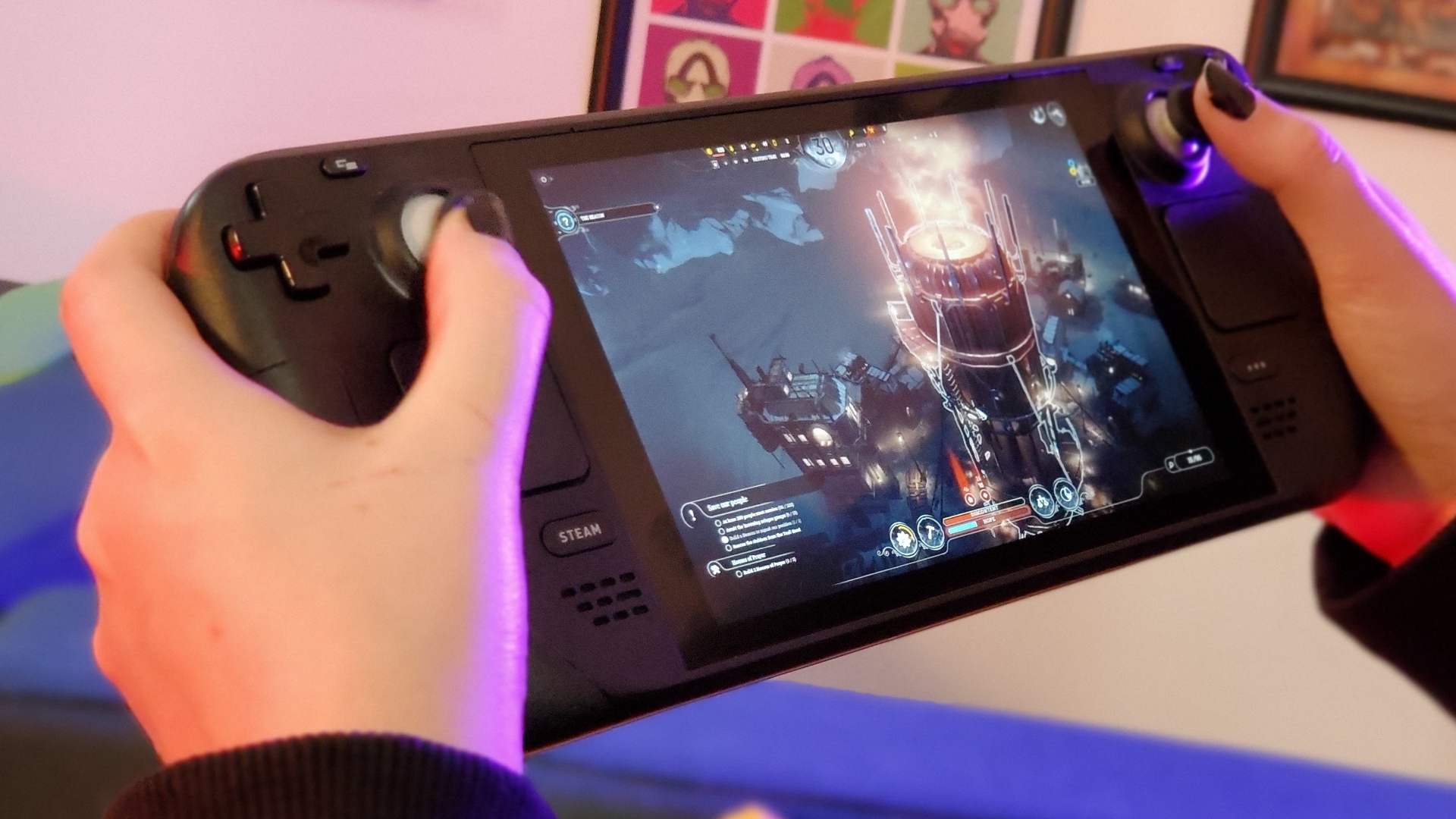
Steam Deck vs Switch: Verdict
I loved my Switch back when I was a travelling man. It's light enough to jam into a hold bag alongside a laptop, has enough charge for a good gaming session, and can play an assortment of great games. And many of those are great games you will only legitimately find on the Switch.
The Switch is a pureblood gaming device, and so very Nintendo
But it's been sat in its carry case for two years now, and with a gaming PC, laptop, and a Shield plumbed into my TV, it's not been needed either in bed or on a sofa. The Steam Deck, however, feels like it might become an extension of my obsessive PC gaming habit, as well as something that I could reasonably take on my travels should such things ever happen again.
The Steam Deck is not quite as portable, however, being a near 60% heavier device than the Switch. So, if being able to slip it into a day bag is a key thing for you, then Nintendo's handheld will be the gaming handheld for you.
But these are fundamentally different devices, despite how surface-level similar they might seem. Sure, they're both gaming handhelds—both good gaming handhelds—but they're going to be attractive to very different people.
The Switch is a pureblood gaming device, and so very Nintendo in its highly controlled, highly curated game library. It's also the very epitome of pick up and play. Tinkerers, on the other hand, are going to get a kick out of all the different facets of the Steam Deck's hardware and how it can be used, where the strictly locked down nature of the Switch doesn't appeal.
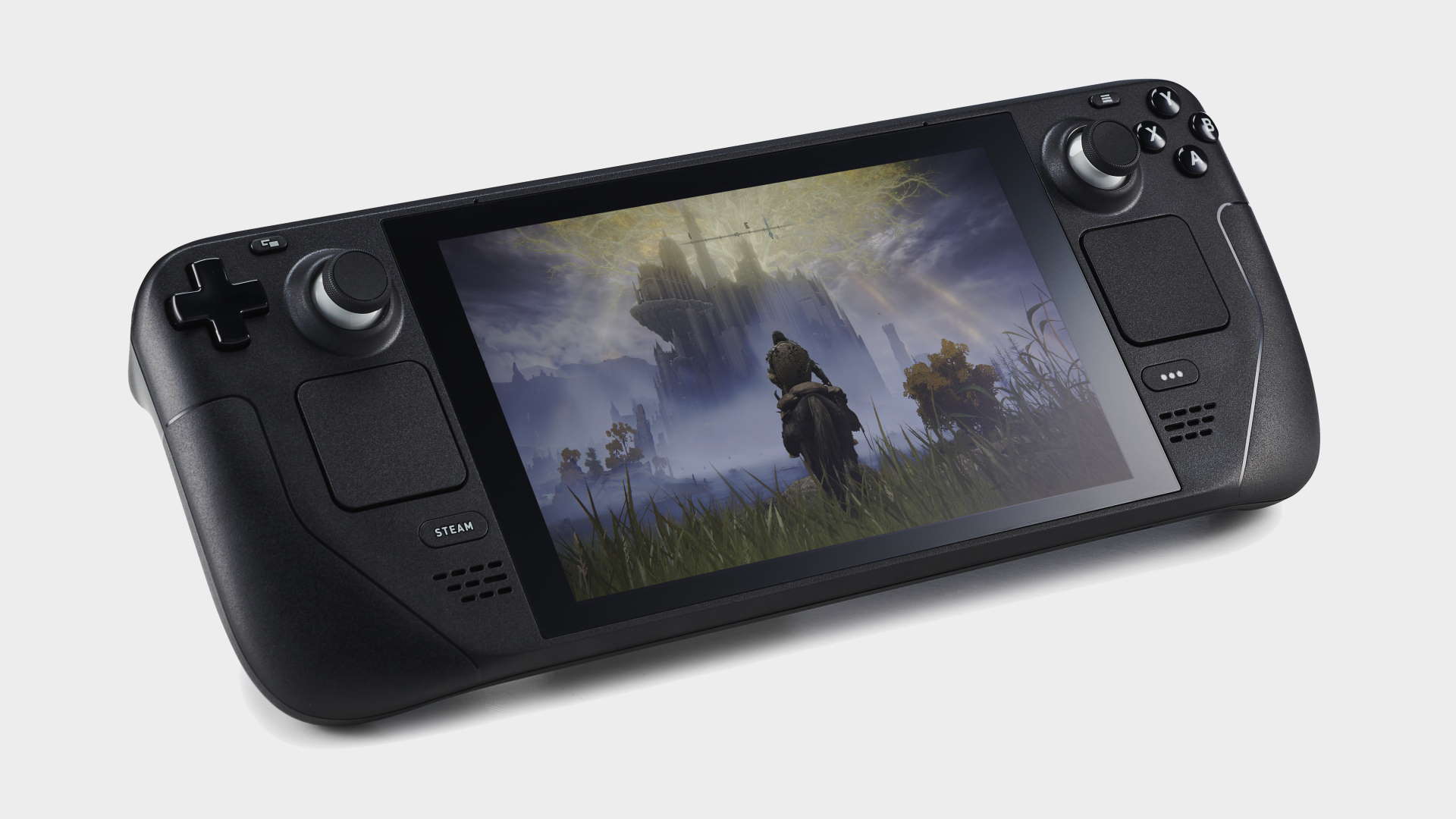
My eternal frustration with the Switch, however, is that it could have been so much more if it wasn't so locked down. Hell, if the Switch had let me jump onto GeForce Now or Game Streaming, from cloud and local gaming PCs respectively—like its inherent Nvidia hardware is 100% capable of—there's a real good chance I wouldn't be so excited to finally have the Deck in my hands.
Sadly, my Switch is patched out of being able to dual-boot with Android 😥.
The Switch could have been everything I wanted: Nintendo goodness with its own games, but with the potential for genuine streamed PC play. But the Steam Deck actually can be everything I want—and with emulation it can even be a Switch. Switch emulation isn't easy, though, especially if you want to stay legit with your gaming library.
Which means that if you want all the goodness that the Switch can offer—something completely separate from the standard PC gaming fare the Deck gives out—then that is still the handheld for you. There's a reason the Switch is such a common second gaming device for PC gamers, it offers tangibly different, tailored experience. A bunch of the games you can play on the Steam Deck will run happily on a pretty standard laptop, while the Switch can offer games that aren't available anywhere else.
That makes the Switch something you could add on top of your PC gaming experience, rather than just more of the same in a more mobile format.

Dave has been gaming since the days of Zaxxon and Lady Bug on the Colecovision, and code books for the Commodore Vic 20 (Death Race 2000!). He built his first gaming PC at the tender age of 16, and finally finished bug-fixing the Cyrix-based system around a year later. When he dropped it out of the window. He first started writing for Official PlayStation Magazine and Xbox World many decades ago, then moved onto PC Format full-time, then PC Gamer, TechRadar, and T3 among others. Now he's back, writing about the nightmarish graphics card market, CPUs with more cores than sense, gaming laptops hotter than the sun, and SSDs more capacious than a Cybertruck.

